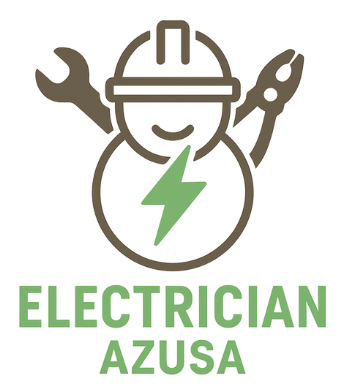Electricity powers nearly everything in a modern household from lighting and heating to charging devices and running appliances. Yet, beneath that convenience, electrical systems can hide serious hazards that quietly develop over time. Wires can loosen, insulation can degrade, and circuits can overload without obvious signs at first. Learning to recognize these hidden dangers early helps you avoid costly damage, power interruptions, and potential fires. Below are practical ways to detect electrical issues before they become emergencies.
Trust Your Senses: Spot Problems Before They Escalate
- Smell: A burning or “fishy” odor near switches or outlets suggests overheating or melting insulation. If the smell increases when an appliance is in use, unplug it immediately and have the circuit inspected.
- Vision: Pay attention to scorch marks, discoloration, or melted surfaces around outlets or cords. Frequent flickering or dimming lights can mean poor wiring connections or circuit overloads.
- Hearing: Crackling or buzzing noises coming from outlets or panels signal arcing – an electrical discharge that can ignite flammable materials.
- Touch: Outlets, switches, or cords that feel hot or vibrate hint at excessive current or loose internal connections that could cause electrical fires.
Hidden Hazards You Should Never Ignore
1) Constantly Tripping Breakers
Circuit breakers trip to protect you from overloads. But frequent tripping isn’t normal – it often means your circuits are handling more current than they’re designed for. Other times, it indicates damaged wiring or a defective breaker. Never ignore a recurring trip – find and fix the real cause.
2) Worn-Out or Loose Outlets
Outlets that wobble, crackle, or can’t hold a plug securely may have loose internal wiring. Each loose connection generates heat that can melt insulation or cause arcing. Secure, grounded outlets eliminate these risks and ensure stable power.
3) Too Many Extension Cords
Relying on extension cords or power strips for everyday use is a sign your home doesn’t have enough outlets. These cords aren’t designed for permanent loads and can overheat easily. Adding more outlets or dedicated circuits is a safer long-term fix.
4) Ungrounded (Two-Prong) Outlets
Two-prong outlets don’t include grounding protection, leaving your appliances and your safety at risk. A grounded system directs stray electricity away from you. Consider upgrading to grounded outlets or GFCI units to enhance protection.
5) Aluminum Wiring in Older Homes
Homes from the 1960s and 1970s often used aluminum wiring, which expands and contracts as temperatures change. This can loosen connections, causing sparks and overheating. Certified electricians can retrofit or correct aluminum wiring with special connectors.
6) DIY or Hidden Wiring Connections
Unapproved splices, taped connections, or junctions buried behind walls are major fire hazards. Every splice must be inside an accessible junction box with a cover. Never conceal wiring – it prevents proper inspection and increases the chance of overheating.
7) Corroded or Damaged Electrical Panels
Check your breaker box for rust, missing covers, or breakers that feel hot. Double-tapped breakers – two wires connected to one breaker can lead to overloads. If you notice humming, discoloration, or signs of melting, call a licensed electrician right away.
Where Electrical Hazards Commonly Hide
Kitchen
- Lack of GFCI outlets near sinks or counters.
- Overloaded circuits from multiple small appliances on one line.
- Warm or buzzing outlets during cooking or appliance use.
Bathroom and Laundry
- No GFCI outlets near water or damp areas.
- Moisture or corrosion around switches and receptacles.
- Dryers tripping breakers or taking longer to operate, indicating voltage issues.
Bedrooms and Living Rooms
- Lights dimming or flickering when another device turns on.
- Buzzing dimmer switches or mismatched light bulbs.
- Power strips overloaded with multiple electronics.
Garage, Basement, and Outdoor Spaces
- Outlets exposed to rain or humidity without weatherproof covers.
- Extension cords used for permanent equipment like freezers or tools.
- Rust or moisture around panels and grounding points.
Simple Home Tests You Can Perform
- Test GFCIs: Press “TEST” and ensure power cuts, then “RESET” to restore. Repeat monthly in wet or outdoor areas.
- Check Outlet Firmness: Plug in a lamp and gently move it – any flicker means the outlet is worn or loose.
- Touch for Heat: After running appliances, ensure outlets remain cool to the touch.
- Monitor Circuit Loads: If the same breaker keeps tripping, divide the devices across different outlets or install a new circuit.
Tools That Make Detection Easier
- Non-Contact Voltage Tester: Safely detects live wires before handling.
- Plug-In Circuit Analyzer: Reveals reversed polarity or missing grounds.
- Infrared Thermometer: Identifies overheated connections invisible to the naked eye.
Extra Care for Specific Situations
Homes with Kids or Pets
- Install tamper-resistant outlets to prevent insertion of objects.
- Secure cords using covers or cable conduits along walls.
Older or Recently Renovated Homes
- Old wiring types like knob-and-tube may still exist behind walls.
- New additions may overload circuits not designed for extra power demand.
Seasonal Concerns
- Winter: Space heaters overloading outlets can cause hot cords or scorched plates.
- Holidays: Excessive decorative lights connected to one outlet risk overheating.
- Summer: Air conditioners drawing heavy current can cause breakers to trip or lights to flicker.
DIY Tasks You Can Handle
- Replace cracked switch plates or tighten loose screws after turning off power.
- Organize tangled cords and label breakers for clarity.
- Regularly test GFCIs and discard damaged cords or overloaded power strips.
When to Call a Licensed Electrician
- Frequent tripped breakers, panel buzzing, or sparking outlets.
- Burnt smells, discoloration, or warm switches.
- Upgrading to grounded, GFCI, or AFCI protection.
- Outdated or aluminum wiring that needs retrofitting.
Emergency Steps During Electrical Failure
- Disconnect Power: Unplug affected devices and shut off the breaker if safe.
- No Water: Never attempt to extinguish an electrical fire with water – use a Class C or ABC extinguisher.
- Evacuate and Call for Help: Leave immediately if there’s smoke or a burning smell.
- Get Professional Inspection: Have a qualified electrician check for underlying faults before using the system again.
Proactive Ways to Stay Protected
- Install GFCIs in kitchens, bathrooms, and outdoor areas.
- Add AFCI breakers to protect against arc faults in living spaces.
- Use tamper-resistant outlets for households with children or pets.
- Schedule yearly inspections to tighten connections and detect heat buildup early.
Final Home Safety Scan
- No buzzing, heat, or discoloration at outlets, switches, or the main panel.
- GFCI and AFCI devices installed where required by code.
- No chained power strips or long-term extension cord use.
- Grounded and properly labeled circuits.
- All wiring enclosed and accessible for maintenance.
Electrical hazards rarely appear suddenly – they often build quietly. By learning to detect unusual heat, odors, sounds, and performance changes, you can act before problems turn dangerous. Regular inspections, modern safety devices, and timely professional help will ensure your home’s electrical system remains safe, efficient, and reliable for years to come.

